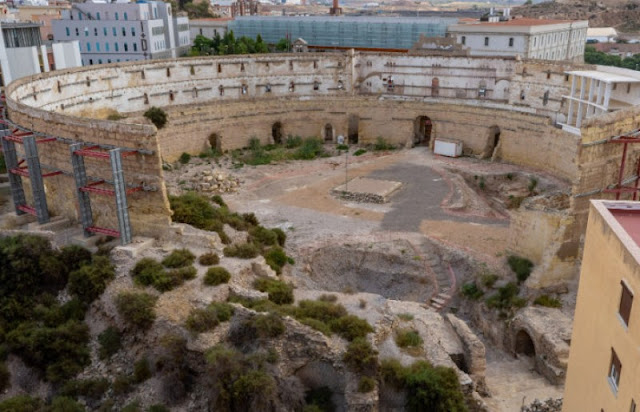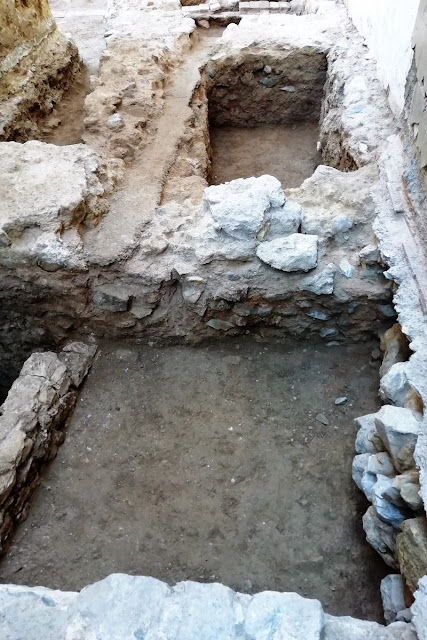As excavation continues at the Roman amphitheatre in Cartagena, a large part of which lies beneath the 19 century bullring, archaeologists have found various fragments of ceramics and an ossuary ground during their dig prior to work to shore up the exterior walls.

Credit: Ayuntamiento de Cartagena
This preliminary campaign has now ended and the next phase will be to reinforce the bull ring and the amphitheatre, a project which is co-financed by the Town Hall and the national Ministry of Development.
The campaign began in December and has included the full documentation of all of the structures of the amphitheatre, during which another ‘carcer’ or service room has come to light: these rooms were used to hold gladiators and animals captive before they were released to do battle in the arena itself.


Credit: Ayuntamiento de Cartagena
In addition, ceramics dating from the 2nd century BC to the 1st century AD have been recovered, as has an 18 century ossuary or charnel house containing bones which are thought to have been discarded after use by students at the nearby Hospital de Marina.
The Roman amphitheatre of Cartagena is one of only eighteen which are known about in the Iberian Peninsula, and only seven of those have been the subject of in-depth archaeological investigation. Six of them can be considered monumental remains, and with the latest discovery the one in Cartagena is on its way to becoming one of the most important in Spain, or indeed anywhere outside Italy.
In addition, Cartagena is one of only four cities in Spain to have both a theatre and an amphitheatre built by the Romans, and when the amphitheatre is eventually opened on a permanent basis to visitors it will be a significant addition to the already impressive range of Roman monuments which attract tourists to the city.





